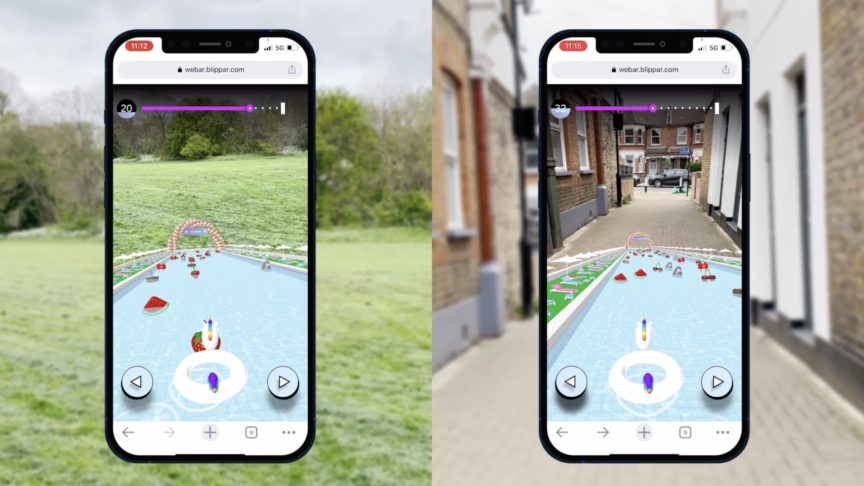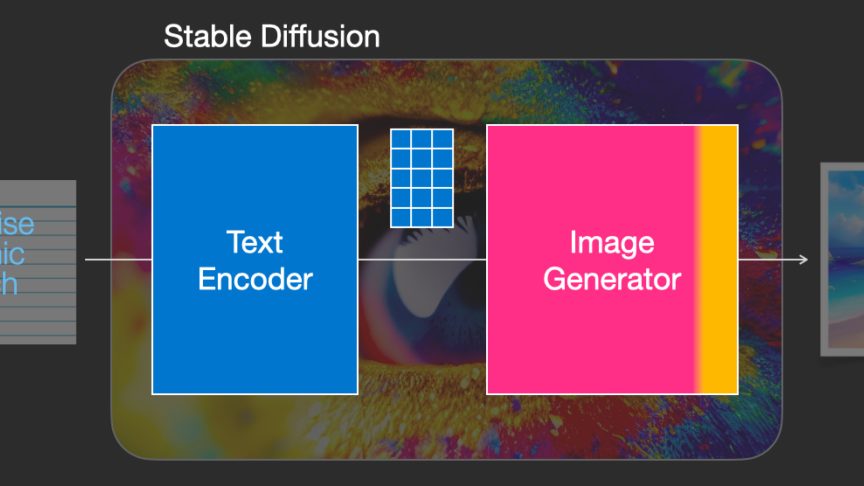‘What would improve my role here? A crown’: Meet Blippar’s Lead Creative
September 23, 2014
‘What would improve my role here? A crown’: Meet Blippar’s Lead Creative

Leon Tyler, Blippar’s Lead Creative, has been designing AR experiences for the platform for just over two years.
The skateboarding, breakdancing, graffiti-loving tattoo enthusiast hails from Cornwall, where he spent his days washing hospital sheets, emptying bins, rewiring strip lights, selling pasties, packing shopping bags, pushing shopping trolleys, spot-wielding cooker components, carrying furniture, reading maps and cold-calling unsuspecting individuals before realising that a) he hated all these jobs, and b) he wanted to go to art school.
Graduating from the Plymouth College of Art in 2010, Leon hot-footed it to GAME where he worked part-time while freelancing on various art projects, the most awesome of which was collaborating with a bunch of breakdancers and graffiti artists for Breakin’ Convention at the Theatre Royal. Then Blippar called.
So, what sort of mind do you need to have to design for augmented reality? Well, pour yourself a cup of tea and step inside his….


How could I turn down a request like that? I love talking about myself! Well, presuming the email was meant for me. I’m assuming my love of Teenage Mutant Ninja Turtles shines through and they were simply encouraging my frequent nighttime vigilante missions.
Anyway, what’s it like to be a designer at Blippar? Let’s get the negatives out of the way first: I don’t have a crown. A crown would definitely improve my role here as Augmented Reality Design King™ (I just spent 3.5 minutes looking for a keyboard shortcut to type that trademark symbol before copy/pasting from the internet).
Designing for augmented reality is as fun as it sounds. I like to call it ‘Augmenting Fun Reality’. Working in AFR requires you to approach design slightly differently. Most designers have experience working only in two dimensions (for the sake of brevity I’ll refer to this as ’2D’ from now on). They know where the viewer is in relation to their design, so only need to make it pretty from the front.
In AFR the viewer will have a camera in their hand. This gives them the ability to view your design from any angle. The front of your design may be the prettiest thing since Beyoncé’s face, but there’s a good chance somebody is looking at it from behind so you need to make sure that yours looks as good as hers!

When a (usually totally awesome) client first asks us to augment their product we herd up the creative apes and sit in a room together flinging food at walls and drawing on our faces. Eventually this grows tiresome and we get down to some work.
We need to consider what the product is, whom it’s for, and what the Blippar campaign aims to achieve. Are we trying to design something that plays music, or educates people? Is it a toy or a game? Or is it designed to take pictures of you with that popstar you fancy so you can pretend to your friends that you met them in Aldi last week?
With most of my blipps I try to see their product as a collectable item you’d want to keep on your boring desk. I want to give it a personality, or give it a tactile physicality (I learned that word from Ashley Banjo) that makes you want to play with it.
At this point in the article I stopped to draw a face on my orange. It made eating it afterwards really difficult, so I’m unlikely to draw faces on my food again.

Where was I? Ah, yes. Working in AFR feels fairly unique as a designer. We have to take into consideration standard rules for mobile design, user interfaces and flows, but also have the ability to create 3D (there are three dimensions now!) scenes that we bring to life with the aid of our blipp developers.
I guess the kick photographers and print designers get from seeing their work printed is the same kick we get from seeing our designs come to life in the real (augmented?) world and THAT is something pretty unique to working here at Blippar (plug).
I personally can’t now see myself working in any other industry - other than gaming, skateboarding, breakdancing or pornography (bet that bit doesn’t make it in) - and thanks to our tech team our creative possibilities are expanding all the time. It genuinely feels like we’re on the verge of something massive.

Leon’s tips for designing Augmenting Fun Reality
1 Always try to design specifically for the product
Sure, we could just attach a few buttons to something and hit our campaign objectives, but wouldn’t it be more fun to give the product an afro while we’re doing it?
Let’s say we have a bottle of spring water. Well, Let’s have a waterfall falling from the top of it into a beautiful valley below. A CD for a rockstar? Why not have a huge stadium burst from the cover with the rockstar performing inside it as the crowd screams in front? Think about what the product is, who’ll be using it, and what kind of personality it should portray.

2 Design for the device it will be viewed on
Most blipps are designed to be viewed on mobile devices, so always be aware that the viewer is likely to have a small screen. Consider that the person viewing your fancy new AFR experience has abnormally large thumbs that mash all over the screen when they try to interact.
Let’s keep those buttons spaced well and not use tiny little hipster fonts. Not only should your design look super-crazy-ill, but people need to be able to actually use it. Remember this is a gateway to content and we need to be sure people can access it.
3 Bring your own crown to work. They won’t provide one for you
Trust me, I was as surprised as you are about this one....


